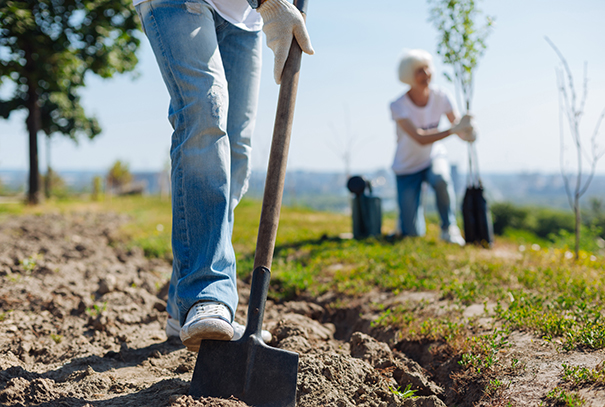
Councils have a responsibility to properly maintain trees and plants in all public spaces, from streetscapes to parks and woodland. But it’s also about investing in green spaces for the short-term and long-term benefit of the community and the environment.
Trees bring so many positives for the communities they coexist with. For towns and cities, the inclusion and proper management of trees and plants within the infrastructure is especially important. Benefits include the improvement of air quality, flood alleviation, increased biodiversity, noise reduction, and the cooling of land and buildings, as well as having a positive effect on property prices as a result of greenery within the built environment.
In addition to all of this are the benefits to our mental health—being around nature, specifically trees, has been shown to reduce the levels of cortisol in our brains. It has even been stated that if everyone in England had access to good quality green spaces, this could save the NHS £2.1 billion every year in treatment costs.1
A serious responsibility
First, let’s consider the issue of maintenance of existing tree stock, which must be carried out according to the relevant legislation, and health and safety guidance. The inspection, pruning and/or removal of some trees is necessary to protect people, buildings and surrounding infrastructure, while in some cases tree felling will be required in order to clear space for building works or new developments.
In order to minimise risk, councils should adhere to the following:
- Insurance: The council should check that any contractors used have Professional Indemnity (PI) insurance in place, otherwise any claim would have to be dealt with by the council’s insurance.
- Risk assessments and inspections: A risk assessment should be in place for tree inspections, which should be carried out by an arborist, not a tree surgeon, unless they have the correct qualifications. Inspections should be properly documented, with professional advice implemented and review dates adhered to. Interim annual inspections should be considered by a person who understands the trees in your area; this can be a tree warden, volunteer or professional person.
- Dealing with hazardous trees: Hazardous trees (classified as trees near the public highway, playgrounds and any other open spaces where people may gather or walk) should be inspected annually at a minimum, and following periods of adverse weather conditions. When dealing with diseased trees, the council should seek guidance from appropriate professional organisations, such as the Forestry Commission.
Getting the community involved
Recently, The Prince of Wales invited everyone from individuals to school groups to councils to ‘plant a tree for the Jubilee’, encouraging people across the UK to get involved. For councils, this may be the perfect opportunity for organising tree-planting events, whether for parks or woodland, or to enhance some of the more built-up spaces.
Such events can provide great opportunities for community engagement, enabling local residents to get involved in designing and improving their green spaces.
A few things to consider for a tree-planting event:
- Health and safety: Your insurance may require you to carry out a risk assessment and/or have a first aider at the event. Risk assessments should include considering hazards such as uneven or muddy pathways, steep gradients and hot weather. All participants will need to be briefed before the tree planting begins to ensure their safety, and the safety of those around them.
- Trees and tools: The size and nature of the trees you are planting need to be matched with the ability of the participants (some, for example, will require people capable of digging tree pits and using a post driver to put in the stakes). Ensure you plan accordingly for the required tools, in terms of suitability, safety and number. If the trees are being delivered in advance of the day of the event, you will need to organise suitable storage.
- Photography consent forms: If you are photographing your event for educational or publicity purposes, you should obtain written consent from participants who are happy to be included.
This is by no means an exhaustive list—you may also want to think about things such as places to shelter should the weather become unfavourable; whether you will be providing refreshments for those taking part, and if people can bring their dogs (and if so, provide clear guidance about the responsibility of owners).
Support from our specialist team
If you want to find out more about how Gallagher can help your council with any aspect of its tree maintenance, or if you are thinking of organising a community tree-planting event, please get in touch. You can also find out more about the risk management services we provide to councils and other public sector organisations on our dedicated Public Sector page.
1. Plant your future - the case for trees (publishing.service.gov.uk)
The sole purpose of this article is to provide guidance on the issues covered. This article is not intended to give legal advice, and, accordingly, it should not be relied upon. It should not be regarded as a comprehensive statement of the law and/or market practice in this area. We make no claims as to the completeness or accuracy of the information contained herein or in the links which were live at the date of publication. You should not act upon (or should refrain from acting upon) information in this publication without first seeking specific legal and/or specialist advice. Arthur J. Gallagher Insurance Brokers Limited accepts no liability for any inaccuracy, omission or mistake in this publication, nor will we be responsible for any loss which may be suffered as a result of any person relying on the information contained herein.



